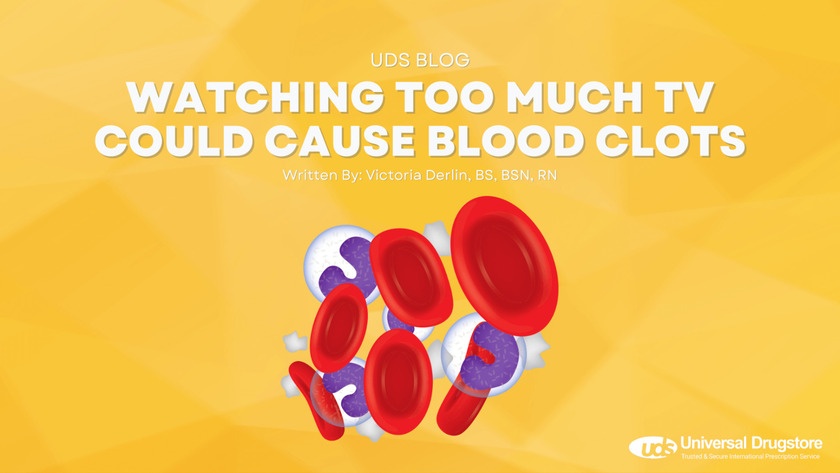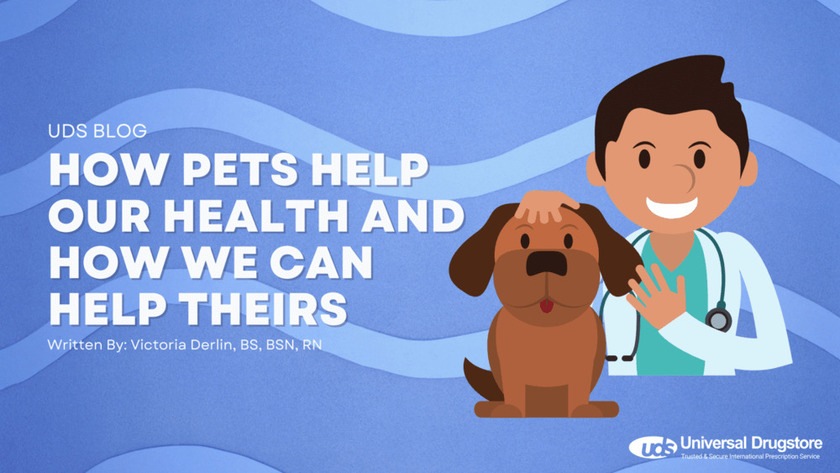A recently published research article in the European Journal of Preventive Cardiology found that people who watched TV 4 or more hours a day were at a 35% greater risk of blood clots compared to people that watched 2.5 hours or less of television a day. The authors of the study suggest that if you are going to watch TV for a prolonged amount of time you should take breaks or stand up and move around every 30 minutes (Kunutsor, et al. 2022).
One of the researchers of the study, Dr. Setor Kunutsor was quoted saying, “Prolonged TV viewing involves immobilization which is a risk factor for VTE. This is why people are encouraged to move around after surgery or during a long-haul flight. In addition, when you sit in a cramped position for long periods, blood pools in your extremities rather than circulating and this can cause blood clots. Finally, binge-watchers tend to eat unhealthy snacks which may lead to obesity and high blood pressure which both raise the likelihood of blood clots” (European Society of Cardiology, 2022).
What is a Blood Clot?
Let’s get down to the basics. A blood clot is exactly what it sounds like, a clot of blood. Your blood contains many different components including cells, platelets, and proteins. These can get stuck together and cause a clump which is known as a blood clot. Everyone is at risk for blood clots. Blood clots are inside the body which means that they are invisible to us without special imaging such as an ultrasound.
Deep Vein Thrombosis and Pulmonary Embolism and Stroke
There are different names and abbreviations for blood clots depending on specifics such as where in the body it is located or what it causes.
Deep vein thrombosis is often referred to as a DVT. This is when a blood clot forms in a deep vein in the body. They commonly occur in deep veins of the limbs which you cannot see.
A pulmonary embolism is often referred to as a PE. This is when part of a DVT breaks off and travels to the lungs. This is very dangerous and can be life-threatening because it can block oxygen from getting to the rest of your body.
If a blood clot gets into or develops in your brain it can cause a stroke. If a blood clot gets to your heart it can cause a heart attack.
Causes and Risk Factors Blood Clots
Everyone is at risk for blood clots but there are factors that put someone at an increased risk such as,
- Lack of physical activity
- Recent surgery
- 65 years of age or older
- On hormonal medications such as birth control
- History of or current cancer
- Recent broken bone or injury
- Obesity
- Confined to a bed or wheelchair
- Vascular accesses such as IVs, PICCs, midlines, or ports
- Vein diseases
- Heart diseases
- Afib and other irregular heart rhythms
- Smoking
- History of stroke
- Paralyzed
- History of blood clots
- Travel with prolonged periods of sitting
- Pregnancy
- Lung disease
- Clotting disorders
- Family history of blood clots
This is a very long list and at least one of these applies to many people, that is why it is important to have knowledge about blood clots. Having the knowledge of what symptoms to look for could save your life or someone else’s. According to the Centers for Disease Control and Prevention (CDC), on average one person in the United States dies from a blood clot every six minutes (CDC, 2022).
Symptoms of a Blood Clot

Sometimes people with a blood clot will have symptoms and other times there may be no symptoms at all. Signs and symptoms you should look out for are,
- Swelling in legs or arms
- Soreness or pain in legs or arms
- Redness
- Heat or warmth
If you have one or more of these symptoms you should seek immediate medical care.
Symptoms of a Pulmonary Embolism
As mentioned previously, a blood clot can break up and travel to the lungs. This is called a pulmonary embolism. This is very dangerous and life-threatening. Symptoms of a pulmonary embolism include,
- Difficulty breathing or shortness of breath
- Chest pain
- Elevated heart rate
- Loss of consciousness or fainting
- Lightheadedness or dizziness
- Coughing
If you or someone you know is experiencing any of these symptoms, you should call 911 and seek emergency medical care.
Beware of Blood Clots After Surgery
Having surgery puts you at increased risk of blood clots for up to three months afterward. A study completed by the CDC found that approximately 1 in every 100 patients develops a blood clot within 3 months of surgery (CDC, 2020). Speak with your healthcare team doing the surgery beforehand about what precautions and prevention they recommend following your surgery. In some cases, you will be prescribed a limited-time blood thinner as prophylaxis for blood clots after surgery. This is especially true for people who are having joint replacement surgery.
Beware of Blood Clots During and After Pregnancy
Women who are pregnant or recently gave birth are at a greater risk of blood clots. In 2017, famous tennis player Serena Williams developed multiple blood clots that traveled to her lungs causing pulmonary embolisms. She has written several articles and done interviews to talk about her experience. She was scared and thought she might possibly die. Women should speak to their healthcare providers about prevention methods for blood clots during and after pregnancy.
Preventing Blood Clots
Having knowledge about blood clots could save your life one day. Prevention is essential to maintaining your health. Methods and tips to help you prevent blood clots include,
- Staying physically active
- Changing positions at least every hour
- Following a healthy diet
- Elevating legs while at rest
- Wearing loose fitted clothing
- Maintaining a healthy weight
- Not smoking

Conclusions
Having a blood clot is no joke. Blood clots must be taken seriously and treated by a medical professional. If you think you or a loved one may have a blood clot seek emergency medical care immediately. Having knowledge of what a blood clot is and its symptoms could save your life one day.
About the Author
Victoria Derlin is a nurse who started her career working in acute care and now works in primary care. She is passionate about advocating for nurses and patients. In her spare time, she rides horses, reads lots of books, bakes delicious pies, and spends time with her family. You can connect with her on instagram @nurse.vicki.rn
Resources
Centers for Disease Control and Prevention. (2022, March 6). Let's talk about blood clots. Centers for Disease Control and Prevention. Retrieved April 6, 2022, from https://www.cdc.gov/ncbddd/dvt/features/prevent-blood-clots.html
Centers for Disease Control and Prevention. (2020, February 7). Multiple sources of data are needed for accurate reporting of blood clots following surgery. Centers for Disease Control and Prevention. Retrieved April 6, 2022, from https://www.cdc.gov/ncbddd/dvt/features/accurate-reporting.html
Setor K Kunutsor, Richard S Dey, Jari A Laukkanen, Television viewing and venous thrombo-embolism: a systematic review and meta-analysis, European Journal of Preventive Cardiology, 2022;, zwab220, https://doi.org/10.1093/eurjpc/zwab220
TV watching is linked with potentially fatal blood clots. European Society of Cardiology. (2022, January 20). Retrieved April 6, 2022, from https://www.escardio.org/The-ESC/Press-Office/Press-releases/TV-watching-linked-with-potentially-fatal-blood-clots







